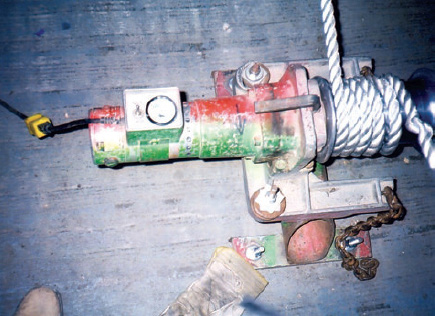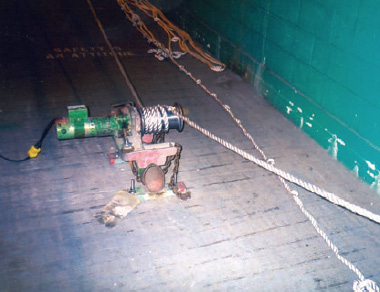

| Topic: New Brunswick Worker Killed in Cable-Pulling Operation | |
| Date Issued: May 1, 2007 | Date Revised: |
A 59-year-old electrician sustained a fatal head injury while using a friction tugger to pull electrical cable.
Two employees were assigned to operate a friction tugger to pull electrical cable. When one of the employees was sent to perform another task, the second employee proceeded with the two-person operation unaided. After operating the tugger and pulling the rope to take up the slack in the cable, he shut off the tugger. The potential energy in the rope was released and, it is believed, that the rope caught the employee’s hand, pulling him forward and causing him to strike his head on the tugger. As there was no eyewitness, it is uncertain whether the rope had been coiled around the employee's hand or if the twisting of the rope caused it to kink and catch his hand.
Manufacturers of pulling equipment agree using the right rope is critical to every pulling job. Not any rope will do. A primary requirement is that the rope is strong enough to sustain the pulling force necessary to bring cable through the conduit with a breaking point four times greater than the maximum pulling force that can be generated by the tugger.
Double-braided composite rope is often preferred because it stretches less and resists heat generated during installation. Polypropylene rope should not be used because it has a low melting point and friction can cause its fibres to melt and stick to the tool’s capstan.
Rope, with high stretching characteristics, stores energy like a stretched rubber band and a component failure during a pull can unleash this energy, posing serious safety hazards. Rope must be in good condition without kinks or splices and should always be inspected before every pull. Worn or damaged ropes should never be used.

Close-up view of tugger

View of tugger with sample of kinked rope on the floor nearby.

Sample of swivel
Revised April 2015